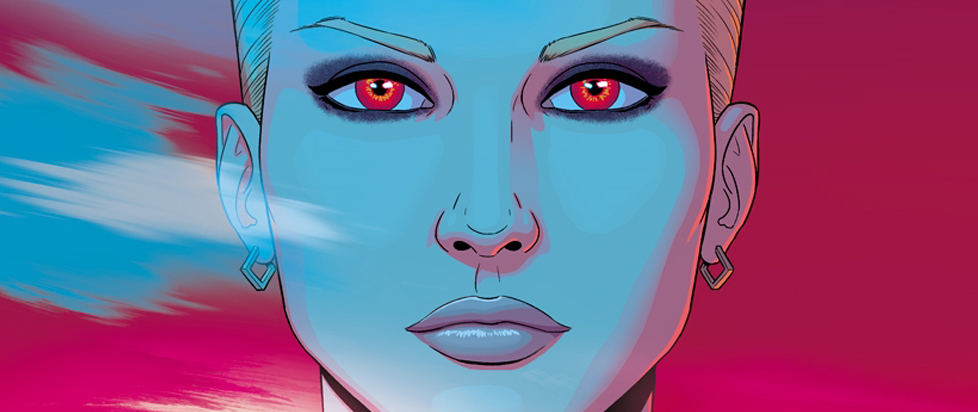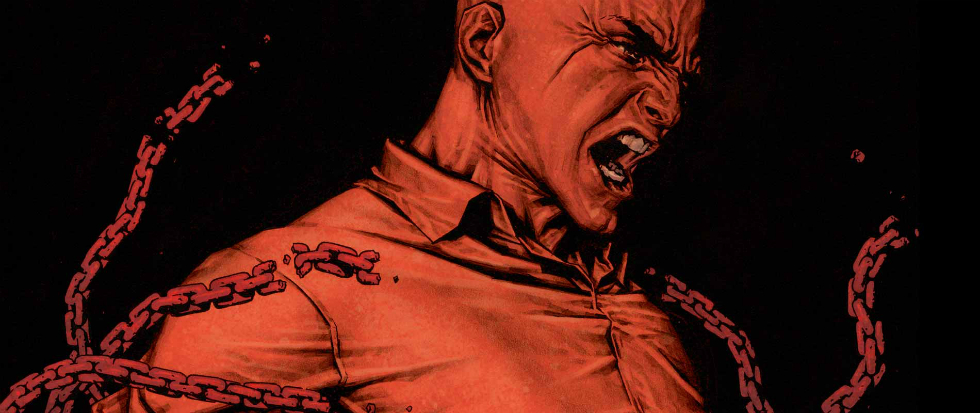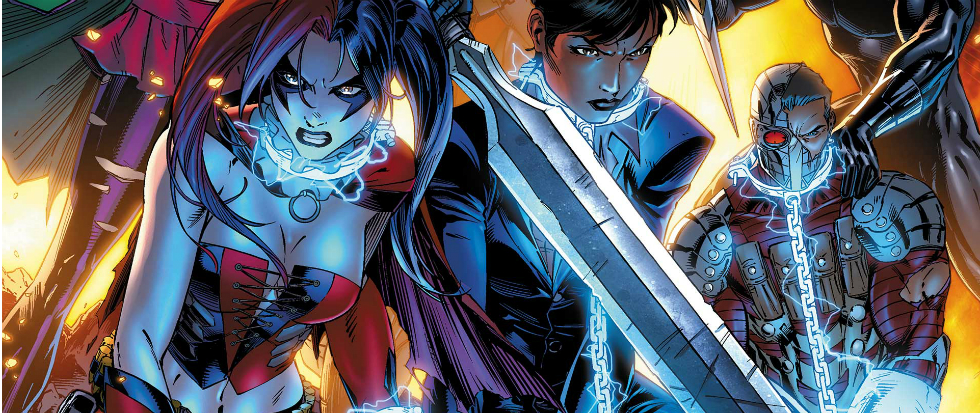
The Best Comics of 2017
Aside from a couple one-off magazine pieces, Last Week’s Comics and the annual Best-of lists were the main ways I snuck myself into the Unwinnable camp. After sending in my ballots for the 2015 lists, I hung around for the annual Can You Hang?® music challenge at the beginning of 2016. In the early summer, I wrote Unwinnable’s comics editor Ian Gonzales saying I noticed he didn’t have any ladies writing for the weekly comics column but lucky for him I was about to change all that, ramming my electronic foot in his internet doorjamb. He gallantly allowed me to play my version of a vacuum saleslady and let me join up.
A lot of the books on this year’s list deal with the past – likely why I’m thinking about my own origin story here. Some deal with past-as-present and the cycles of death and rebirth, some are lovely and clever single-story memoirs, some are fantastical coming-of-age tales, and some offer stylized versions of an American past that don’t seem so unlike the present. Many and most jump between these categories.
I wrote my first review for Last Week’s Comics on The Wicked + The Divine, which is still the backbone of my pull list and the defending champion of our Best of Comics list. As a fan of cycles and symmetry, I’m stoked to be introducing this year’s list, where WicDiv still reigns supreme. Without further ado, let’s get to it.
(Sara Clemens)
Usagi Yojimbo
2017 has been a good year for the Ronin Rabbit. Some totally awesome crossovers on screen and on the comic book page with his longtime brothers from another era, the Teenage Mutant Ninja Turtles, have yielded an increase in exposure that Miyamoto Usagi hasn’t had since the late 80’s. There were also a bunch of successful Usagi action figures made and now Dark Horse will be publishing a new exciting series in January featuring him called The Hidden. Oh, and creator Stan Sakai steadily wrote and drew one fantastic issue after another of the regular Usagi Yojimbo series monthly this year, blending Japanese history and mythology with anthropomorphic animals effortlessly as he always has since 1984. I’ll have to agree with a recent statement on Comicbook.com, “Usagi Yojimbo is the best comic book being put out by Dark Horse right now.”
(Mike Edwards)
 Most Likely to Scrim Scram for a Nickel: Rock Candy Mountain
Most Likely to Scrim Scram for a Nickel: Rock Candy Mountain
Rock Candy Mountain is a comic about WWII veteran and current hobo, Jackson, searching for a mythical treasure (promised in the titular hobo folk song) all while the actual Devil chases after his soul. This Kyle Starks jam is the gosh dang literal definition of what you would call “a hoot.” Starks’ stylized cartooning, sharp humor and smooth storytelling pull the reader in issue by issue.
Young Jackson was drafted into World War II. Married with a newborn baby, Jackson’s wife, Holly, begged him not to go. You see, Jackson couldn’t fight worth a good gosh darn. So, instead of claiming he had bone spurs or something equally cowardly and ridiculous, Jackson went to the mythical crossroads at midnight and made a deal with the Brimstone-stinking Devil – now no one man can ever beat Jackson in a fight. The book chronicles Jackson’s life after the war as he rides the rails in search of cigarette trees and freedom from his bargain. Rock Candy Mountain is as funny as Tales Designed to Thrizzle, as violent as a Garth Ennis comic and as heartbreaking as I Kill Giants.
Damn it, Kyle Starks, why are you so good?!
(Ian Gonzales)
 The Too Serious a Work for a Silly Award Award: Imagine Wanting Only This
The Too Serious a Work for a Silly Award Award: Imagine Wanting Only This
Kristen Radtke’s haunting graphic memoir opens with her beloved uncle’s death from a congenital heart condition, one she may have inherited. From her home in Wisconsin to college in Chicago, travels across Europe and graduate school in Iowa, Radtke ruminates on mortality – particularly the death of a stranger discovered through photographs. She develops “ruinophilia,” a fascination with architectural decay, serving as both poignant metaphor and opportunity for gorgeous greyscale artwork. The carefully constructed panels and full-page spreads intensify the story while leaving space for its weight. A powerful narrative of grief, restlessness and desire.
(Deirdre Coyle)
 The Renewed Hope Award: Saga
The Renewed Hope Award: Saga
This year in Saga featured an arc that brought us back from the brink of despair. After the devastating conclusion to the previous arc in Issue 42 back in January, Marko and Alana’s family and frenemies are stranded on a hostile barren world faced with a number of agonizing options. Somehow amidst all of the loss and sadness, creators Brian K. Vaughan and Fiona Staples managed to bring back hope, both for the character and the readers. We needed some of that this year.
(Mike Edwards)
 Shade the Changing Girl
Shade the Changing Girl
When it comes down to it, I love Shade the Changing Girl not because of the psychedelic overtones (both visual and narrative) or the way that it captures the capricious cruelty and inexplicable loyalty of adolescent friendship (is “friendship even the right word? It is so often so much more and just as often so much less than that – family, frenemies and the people you just happen to see every day because you have the same friends, or just the same classes), even though both of these things are marvelous. I love Shade the Changing Girl because it is a book that takes seriously the proposition that poetry can change your life.
In the past (abbreviated) year, Loma, the Metan (alien bird woman) inhabiting the body of (mostly) deceased (human) mean girl Megan Boyer sets out on the road, bringing a bit of color to Gotham City and eventually tracking down the star of her favorite mid-century atomic-era American sitcom. Sometimes the best way to discover who you are is to become someone else. (Sometimes a bit of TV helps.)
Pop culture is a collective dream in which we enact our most fervent (and frequently our most outlandish) visions of who we are and who we wish to be. If this sounds a bit like adolescence, then perhaps it is no accident that pop culture is obsessed with youth – not so much for its beauty (it is, after all, no accident that Hollywood inevitably casts twenty-somethings as teenagers) as for that process of becoming ourselves that is so horrific to inhabit and so tempting to valorize when it is over. Shade the Changing Girl, in the urgency (rather than the sophistication) of its poetry and its endlessly morphing Technicolor ennui, gets both pop culture and adolescence right.
(Gavin Craig)
 Best Lycanthrope: My Favorite Thing is Monsters
Best Lycanthrope: My Favorite Thing is Monsters
2017 was a great year for graphic novels – over half of the slots on my ballot were taken up by this year’s offerings, in fact – but even in a deep and diverse field, Emil Ferris’ masterful storytelling stands apart. Half coming-of-age tale, half noir mystery, My Favorite Thing is Monsters presents itself as the spiral-bound notebook of its 10-year-old protagonist, Karen Reyes. She’s got a penchant for monster mags and movies, and being the offbeat, creative thinker she is, she sees and draws herself into her diary as an adorable little wolf-girl.
She’s also an insightful sleuth and soon finds herself embroiled in the lives and comings and goings of the people in her 1961 Chicago neighborhood as she investigates the murder of her upstairs neighbor. Along the way, she writes asides like “if a person could see through a glass eye would the world look more breakable?” in her notebook, imbuing the grim proceedings with a youthful and wise curiosity. The art is spectacular, too: ballpoint pen crosshatch on lined paper pages, done up in black and blue save for vibrant pops of red standing out like drops of blood on a linoleum floor.
(Sara Clemens)
 Best Reveal of the Hidden Truth of the World Around Us: Injection
Best Reveal of the Hidden Truth of the World Around Us: Injection
One of my favorite things about Hellboy is that is that almost the entire world of Hellboy exists just on the periphery of our world. Injection takes that to the next level of mundane. Instead of Nazi’s and world ending plots, the dark world of the fae exists just on the periphery, trying to claw its way through to ours. If in Hellboy it was plausible that Hellboy could exist just off screen in our world, its almost certain that Injection does exist in ours.
Now having finished its third arc, the reunited Moon Knight team of Warren Ellis, Declan Shalvey and Jordie Bellaire, continue to craft an astonishingly weird blend of high fantasy, high tech and aggressive Britishness. It’s still weird, still barely coherent, but also still brilliant.
Perhaps its greatest feat is how much of your eye each page demands. Its easy to flip through a book and be done with it but Injection actively resists this. It wants you to pour over page after page of wordless delight forcing you to see the panel, page, and book as units like the word, sentence and paragraph. It rewards reading and rereading and comics are a better place for having this team together another year.
(David Shimomura)
 The Why Isn’t Strangers Things More Like This Award: Paper Girls
The Why Isn’t Strangers Things More Like This Award: Paper Girls
The Kid Adventure is still having its moment in all forms of media, but Paper Girls remains one of the best examples. Last year’s giant tardigrade seemed hard to top, but this year we had giant robot fights and cannibals along the usual mix of high schooler drama and time travel. Amidst the chaos, Brian K. Vaughan finds room for great character moments, particularly Mac’s wrestling with the facts of her future and KJ’s matter-of-fact coming out, which serve to ground a story that is getting ever weirder with his trademark frankness. Nostalgia is a powerful drug, and there is plenty lying around in Paper Girls, but it is the characters and their reasonable reactions to the unreasonable, which keep me coming back for more. Also, Cliff Chiang’s art – he’s one of the best in the business.
(Stu Horvath)
 Most Needed Escape: Mister Miracle
Most Needed Escape: Mister Miracle
In comics, many of our best stories take an element, central but somehow overlooked or ignored, and place it in the foreground. It might be the fact that Jim Gordon and the Batman could not have started out as allies. Or that statistically speaking, it’s extraordinarily unlikely that Kal El’s spacecraft should have landed in the continental United States.
In Tom King and Mitch Gerard’s Mister Miracle this elided fact is not, as it might first appear, that Scott Free was abused as a child. That much has been part of the character’s lore since the Jack Kirby days, as embodied by Granny Goodness, Scott’s sadistic nanny, whose violence expresses itself as direct and penetrating parody of the language of love. It is not even a thought experiment in the terror that Darkseid could perpetrate if he ever acquired the Anti-Life equation and gained the ability to strike at his enemies by twisting the very core of their being.
The fact at the center of Mister Miracle is that Scott Free has been abused by everyone in a position to be responsible for his care as a child, not just Darkseid and Granny Goodness, but by Highfather himself, who delivered Scott to Apokolips in the vain hope for peace from a man capable only of war. When the people who are supposed to love us cause us harm, when they do it again and again, even when we become capable of telling them that it is harm, when they tell us again and again that it is love, that it is because they love us, then one of the things we lose is not just the ability to know what it is to love and be loved. We lose the ability to know what is real.
I am not entirely sure what is going on in Mister Miracle. I don’t know whether Highfather is really dead or if Orion is acting in good faith. I don’t know whether the occasional glitching in the panel artwork is Darkseid interfering with reality, or if Scott Free is not well, or even if what we are seeing is what Scott is seeing. Knowing the nature of the trap is the first step in escaping it, and it is hard right now to know what is real.
Mister Miracle is painful and powerful. I hope he escapes.
(Gavin Craig)
 Best Comic of the Year: The Wicked and the Divine
Best Comic of the Year: The Wicked and the Divine
It’s a repeat at the top of the charts for Kieron Gillen and Jamie McKelvie. Our kings for a year, twice over. And while Gillen and McKelvie may have better odds at a third go-round than their creations, it is increasingly clear that the end is near, and The Wicked and the Divine is better for it.
The Wicked and the Divine rewards re-reading like few other comics, in large part because it has always had a destination. A dozen teenagers, selected by destiny (or something else) to embody the ancient divine forces that inspire humanity live as gods for two years, more or less. Just because you’re immortal doesn’t mean that you’re going to live forever.
In the past year, purpose has eluded the gods. Destiny (Necessity) has been destroyed and the gods are free. Free, the gods are lost. Lost, the gods consume themselves. Beware the truth, for the truth shall set you free.
But it isn’t really about the gods, it’s about the people playing god, cursed with masks that really do transform them, at least on the outside, into what they really are. We play dress-up as our deepest, most honest selves. Beware the honest, Destroyer. They will hurt you just to feel clean.
The secrets have been in plain sight all along, but we are only just discovering what they mean. It is hard to know what to say that will be adequate, that will not give everything away. Just go back to the beginning, while you still can. With how little time we have left, why waste any of it talking?
(Gavin Craig)




